Old Town Albuquerque
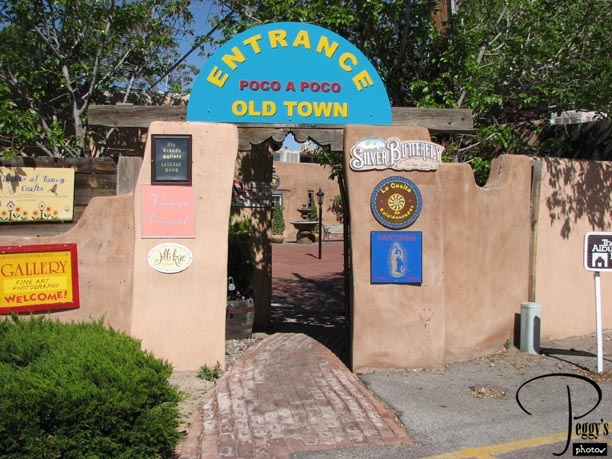
I came to New Mexico, called The Land of Enchantment, to visit my sister, Linda, and brother–in–law, Rick, who live in Albuquerque. I took Delta from LAX, with a change of planes (from a good–sized one to a commuter–size plane) at Salt Lake City, Utah (I flew on Delta miles, so I took what I could get for a flight), but I did get a very good look from above at the Great Salt Lake. (Note: We were told by our Delta flight attendant that if you have at least a 2 1/2–hour stopover in Salt Lake City you can take a tour from the airport to the famous Mormon temple). No ecomony car was available for me at Albuquerque, and so instead of having me wait for one, the Alamo guy asked me if I would like a snazy Volvo instead. Of course I did. I also rented a GPS but which I couldn’t get to speak loud enough in the beginning, so even with the GPS and my sister’s directions, I got lost in Albuquerque trying to find her home (I just added it to the list of cities that I have gotten lost in), but after turning around on the I–25 and calling her twice on my cell phone, I arrived at her house. Day 2: My sister and her husband went off to a doctor’s appointment, so I took off for a visit to Old Town Albuquerque. Photo: Entrance to Old Town Albuquerque from one of the parking lots.

Old Town Albuquerque
Old Town Albuquerque
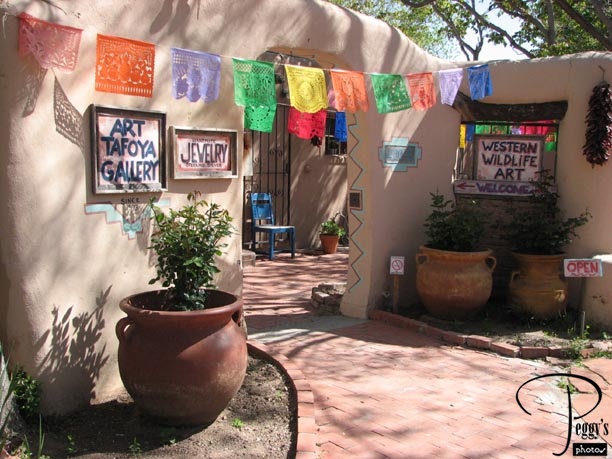
Albuquerque is a 300–year–old city, named in the honor of the Spanish Duke of Albuquerque by the Spanish conquistadors who came to New Mexico to find the seven cities of gold (they never did). Indian tribes have lived in New Mexico for 10,000–plus years. Today, Albuquerque is a city of about 500,000 people and is the largest city in New Mexico. It is located in the high desert––its elevation is almost 5000 feet (it snows here in the winter––21 inches last winter). Photo: Walking to the plaza from the parking lot.

Old Town Albuquerque
Old Town Albuquerque
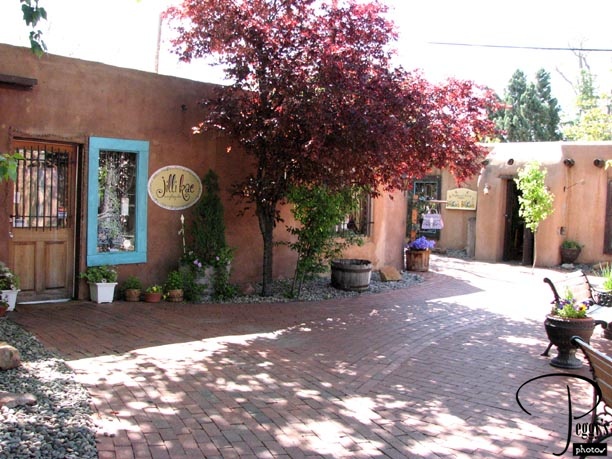
Seen on my walk. The architecture of the pueblo–style buildings was taken from the dwellings of the Pueblo Indians. (I am going to use the word “Indians” rather than “Native Americans” as all the literature that I picked up in New Mexico uses the term “Indians.” Also, the Indians that I talked to all referred to themselves as Indians). The buildings are made from adobe bricks––mud, straw, and water––and originally covered with mud, though today most are covered with stucco. Most interestingly, we were told that houses in Santa Fe (and perhaps elsewhere in New Mexico) are still being made from adobe bricks as this ensures that the lines of the buildings are somewhat wavy. Much blue and pink are used on the windows and doorways and you see these colors used throughout New Mexico. One tour guide told us that the blue is from the Moors, who influenced the Spanish. One Indian guide told us that the blue signifies water.

Old Town Albuquerque
Old Town Albuquerque
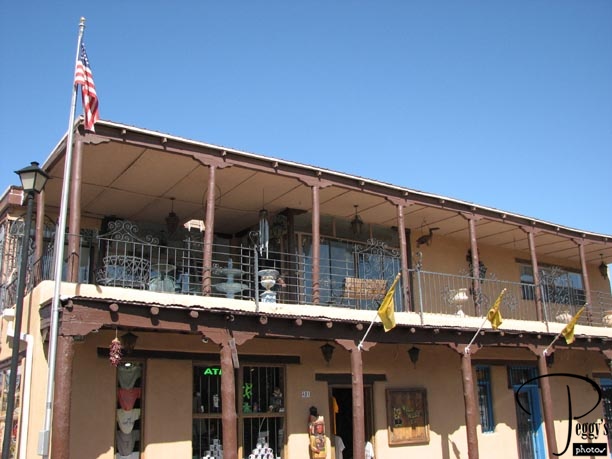
A two–story pueblo building.

Old Town Albuquerque
Old Town Albuquerque
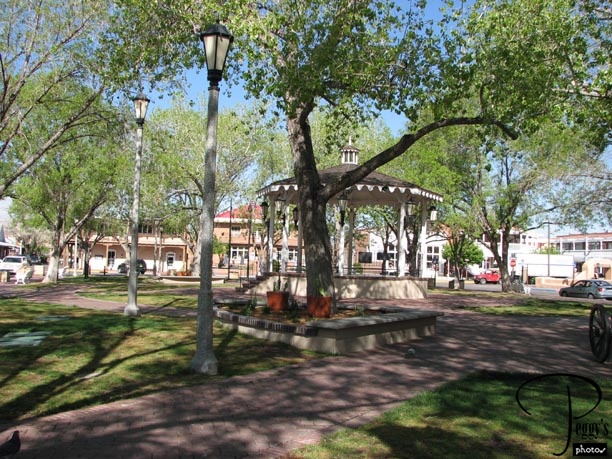
The Plaza. The Spanish laid out their villages around a central plaza, with church on one side and houses, etc., on the other sides.

Old Town Albuquerque
Old Town Albuquerque
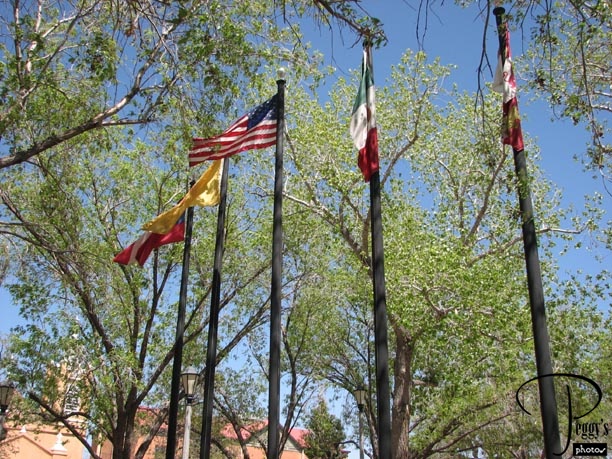
Five flags in the Plaza. It was breezy today. Other days it was windy, very windy, or extremely windy. Sometimes it was warm, sometimes quite chilly. I believe that the flags are the U.S. flag, the Spanish Colonial flag, the Mexican flag (after the Spanish left, New Mexico was part of Mexico), the New Mexico flag, and the Texas Confederate flag. New Mexico was under the Texas Confederate rule for 35 days during the American Civil War.

Old Town Albuquerque
Old Town Albuquerque
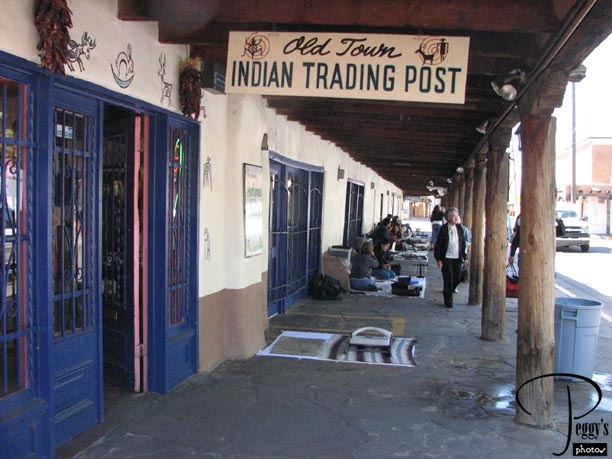
The Old Town Indian Trading Post is the name of the store on the left of the photo. Along the portale, individual mechants (Indians and others) sell merchandise laid out on blankets. This building is on one side of the Plaza.

Old Town Albuquerque
Old Town Albuquerque
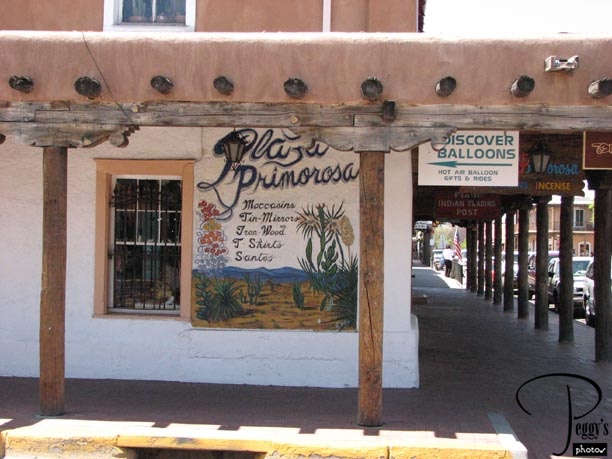
Store across the street, also on the Plaza.

Old Town Albuquerque
Old Town Albuquerque
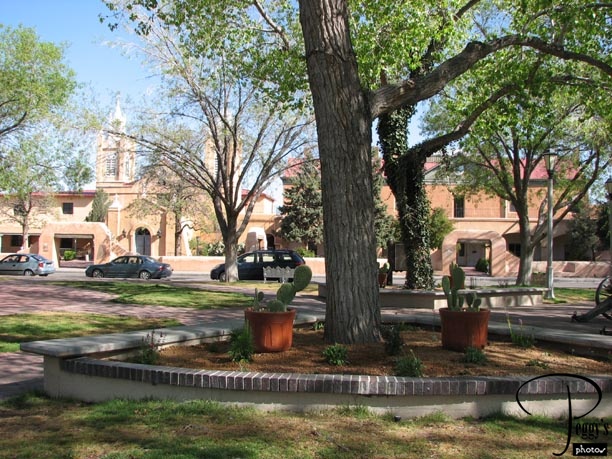
San Felipe Neri Church on the Plaza.

Old Town Albuquerque
Old Town Albuquerque
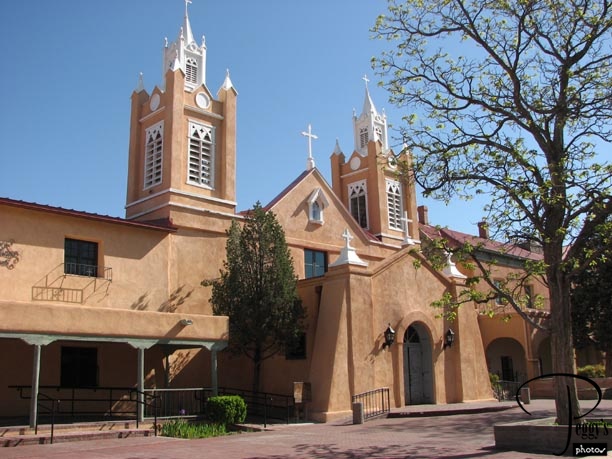
A better view of the San Felipe Neri Church. The church was originally built in 1706 and was rebuilt in 1793. The structure built by the Spanish has be modified by other settlers throughout the years.

Old Town Albuquerque
Old Town Albuquerque
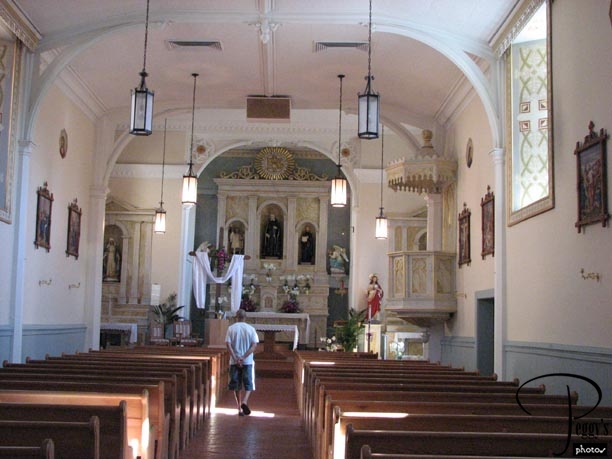
Inside the church.

Old Town Albuquerque
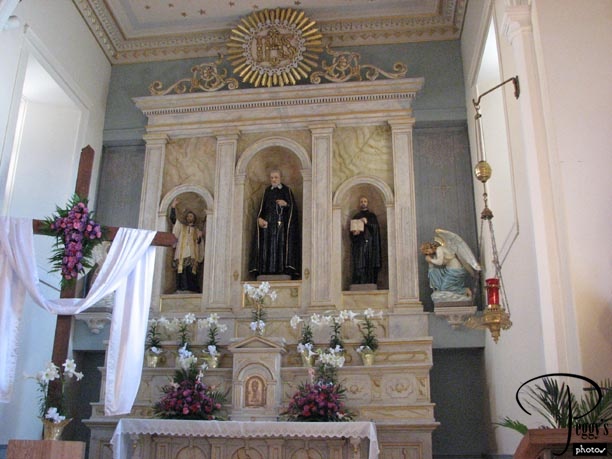
The altar. This type of altar was the only one of this type that I saw in New Mexico.

Old Town Albuquerque
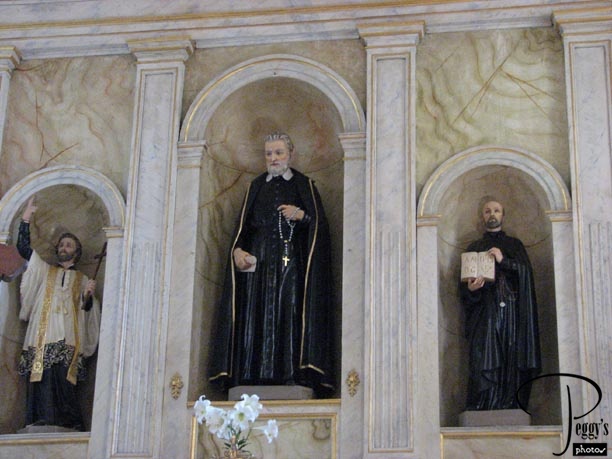
Close–up of the altar.

Old Town Albuquerque
Old Town Albuquerque
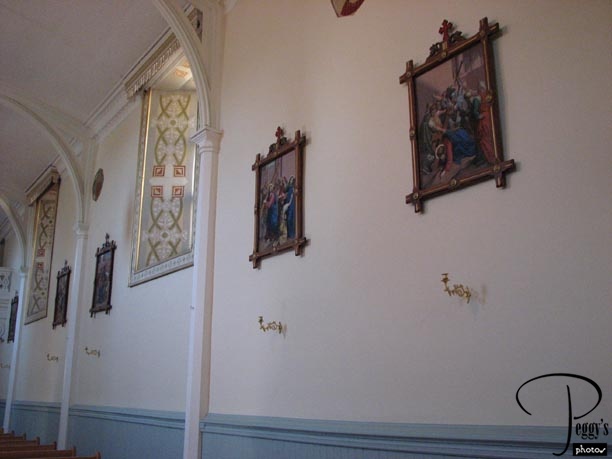
One of the walls of the church. Note the drawings on the side of the window.

Old Town Albuquerque
Old Town Albuquerque
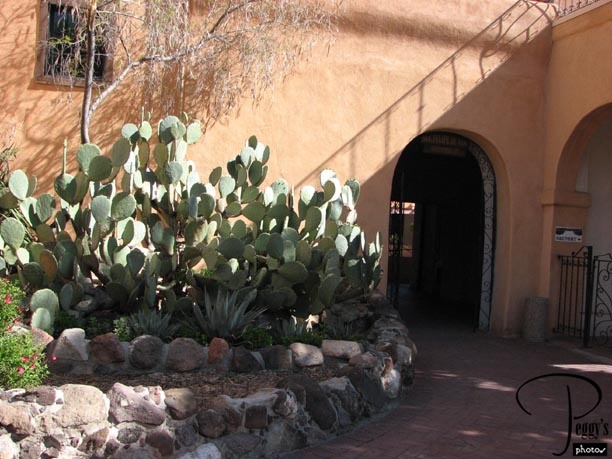
A very large cactus outside the church.

Old Town Albuquerque
Old Town Albuquerque
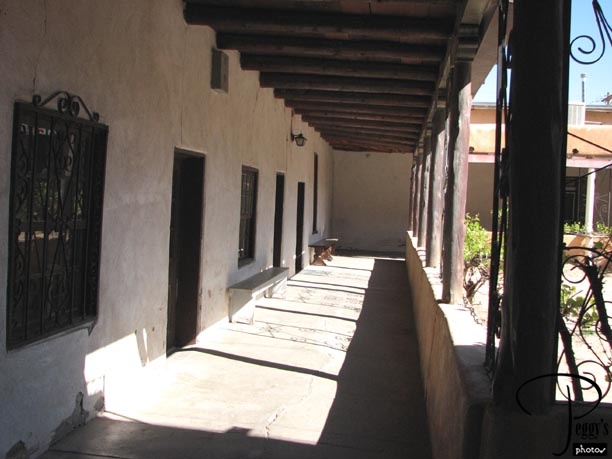
The outside corridor, looking very much like the ones in California’s Spanish missions.

Old Town Albuquerque
Old Town Albuquerque
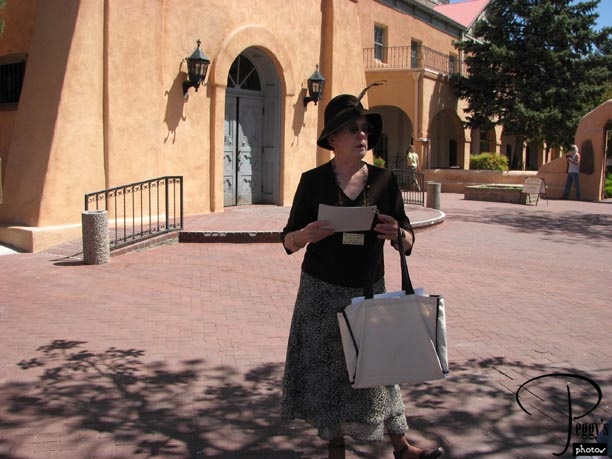
I took three walks through Old Town––first by myself; second, with a tour guide (free 1–hour walking tours leave from the close–by Albuquerque Museum of Art and History most days at 11 a.m.); and third, again by myself. This is a photo of our tour guide. I am very glad that I took this tour as our guide pointed out quite a number of things that I would never have noticed otherwise.

Old Town Albuquerque
Old Town Albuquerque
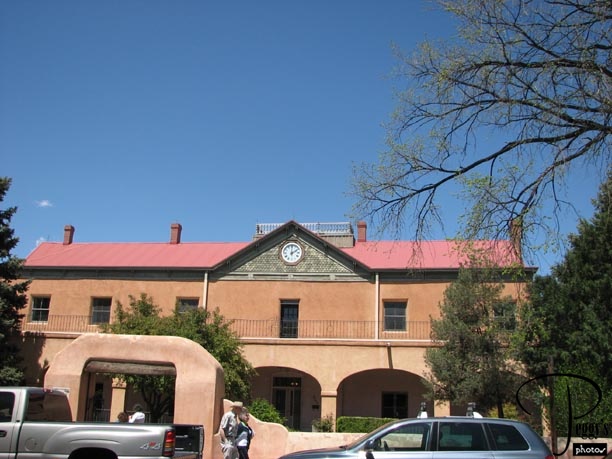
One of the things that the tour guide pointed out was the very different style of the rectory next door to the church. There is even a widow’s peak on top of it––very East Coast.

Old Town Albuquerque
Old Town Albuquerque
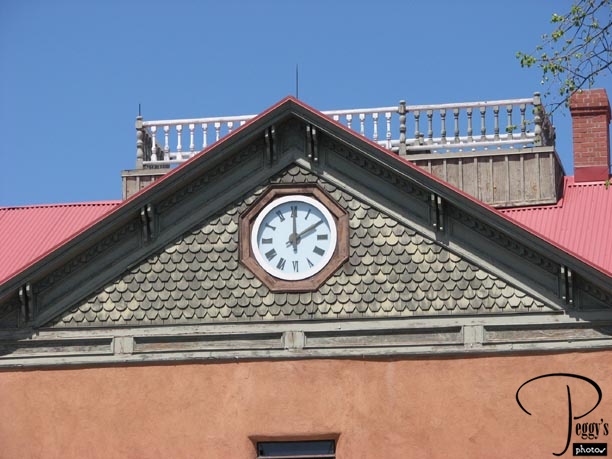
A closer–up view of the top of the building––definitely not very Spanish.

Old Town Albuquerque
Old Town Albuquerque
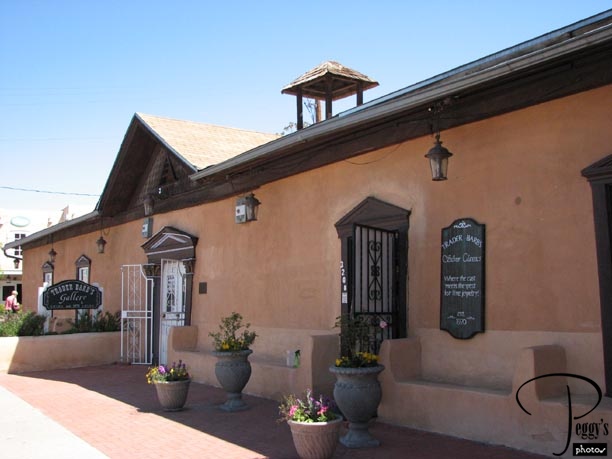
This building was originally a church school and is located on the side of the church.

Old Town Albuquerque
Old Town Albuquerque
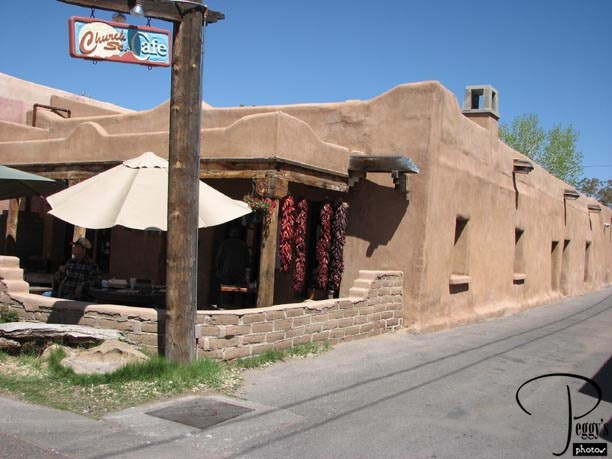
The oldest building in Albuquerque, now a cafe.

Old Town Albuquerque
Old Town Albuquerque
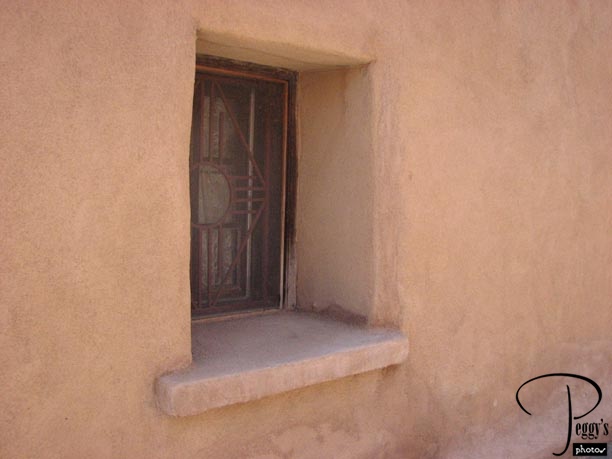
The walls of the buildings were very thick to keep them cool in summer and warm in the winter.

Old Town Albuquerque
Old Town Albuquerque
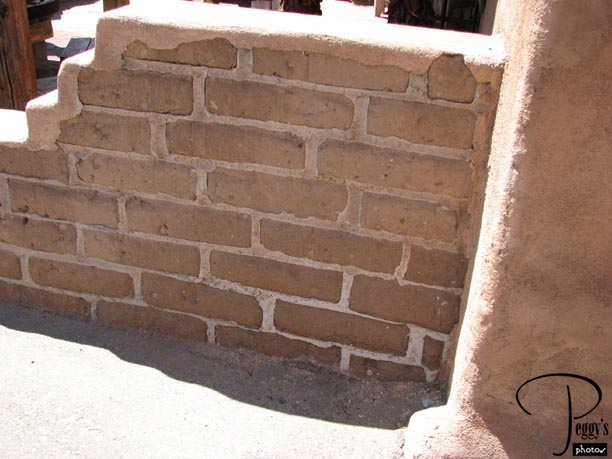
Exposed adobe brick work in front of this building.

Old Town Albuquerque
Old Town Albuquerque
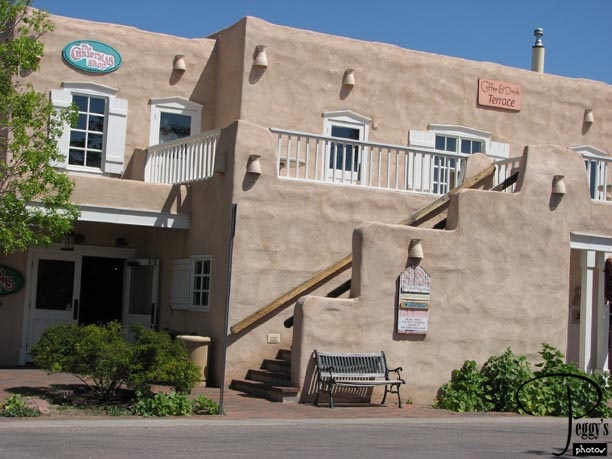
A two–story adobe building.

Old Town Albuquerque
Old Town Albuquerque
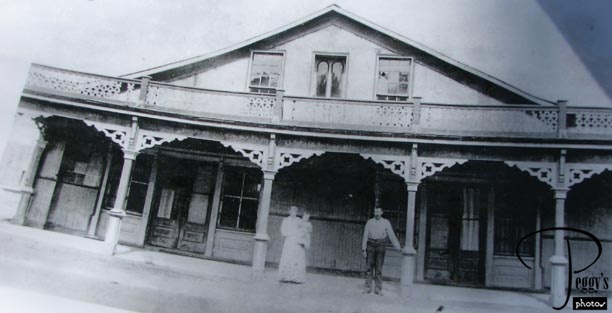
At one time, Victorian buildings replaced the pueblo–style buildings around the Plaza. A photo of one of these buildings––shown to us by our tour guide.

Old Town Albuquerque
Old Town Albuquerque
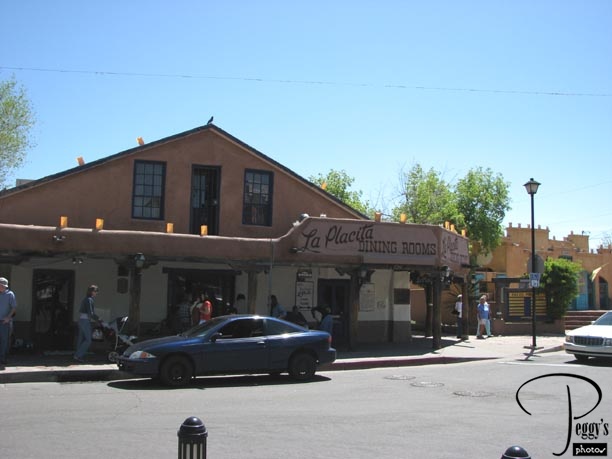
Then the Old Town reinvented itself and realized that tourists wanted to see pueblo–style buildings here, so the Victorian buildings were pueblo–ized. This photo is the pueblo–style redo of the Victorian building in the last photo.

Old Town Albuquerque
Old Town Albuquerque
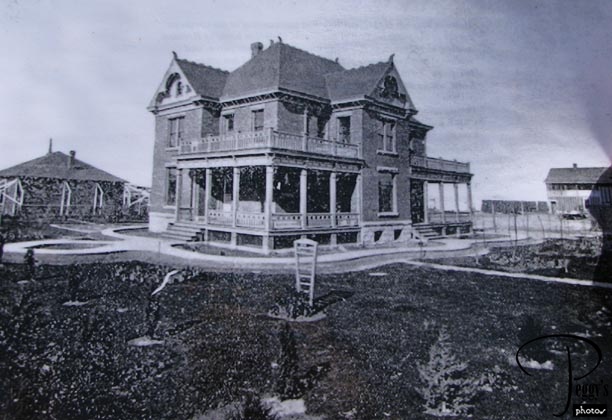
Another photo of an old Victorian building on the Plaza.

Old Town Albuquerque
Old Town Albuquerque
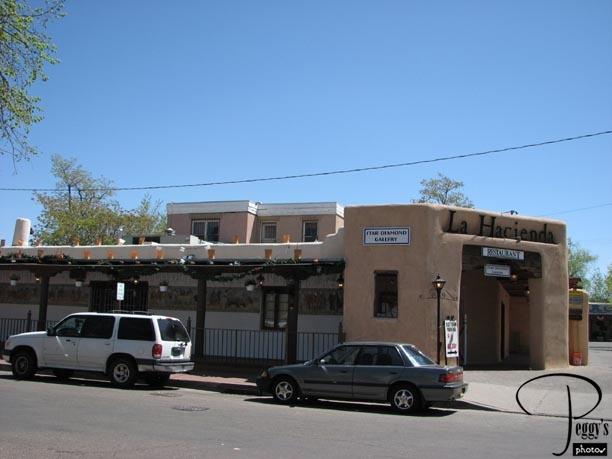
And this is the pueblo redo of the Victorian building in the last photo.

Old Town Albuquerque
Old Town Albuquerque
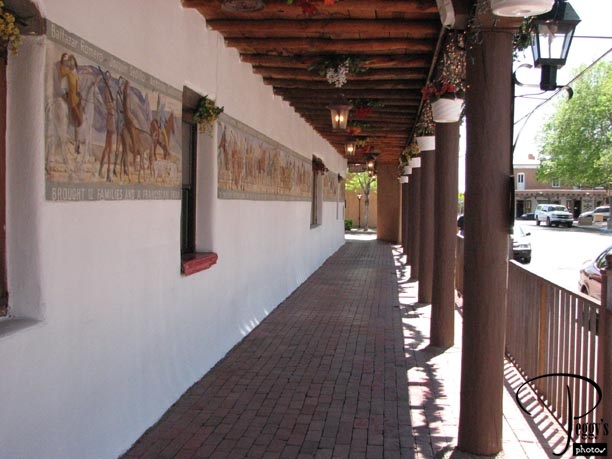
The portola in front of this building, which is now the La Hacienda Restaurant. There is a very long mural on its outside wall depicting the history of Albuquerque.

Old Town Albuquerque
Old Town Albuquerque
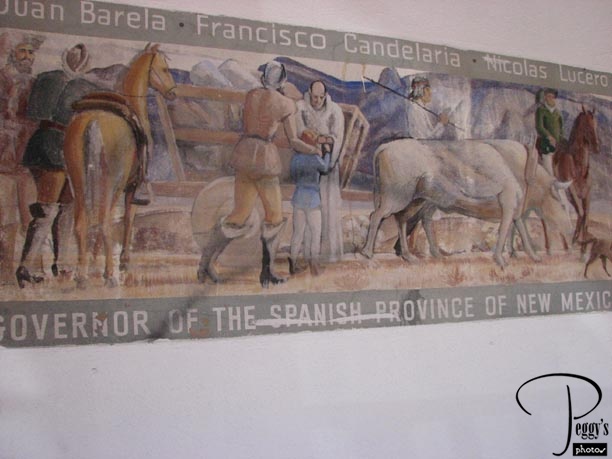
Close–up of the mural.

Old Town Albuquerque
Old Town Albuquerque

Another pueblo redo building––this one has an Italianate top.

Old Town Albuquerque
Old Town Albuquerque
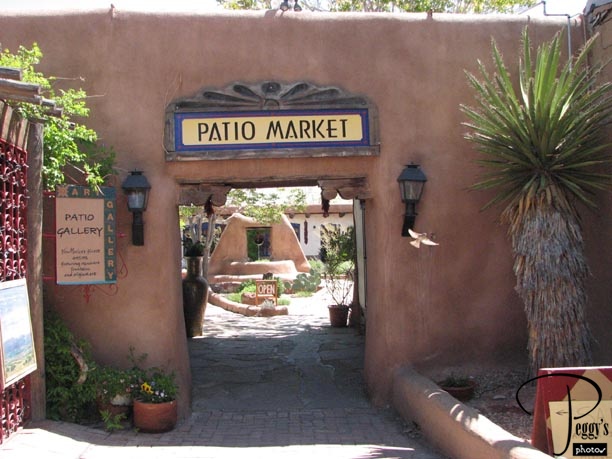
I would have missed this part of Old Town without my guide. It is hidden away back of the La Placita Restaurant.

Old Town Albuquerque
Old Town Albuquerque
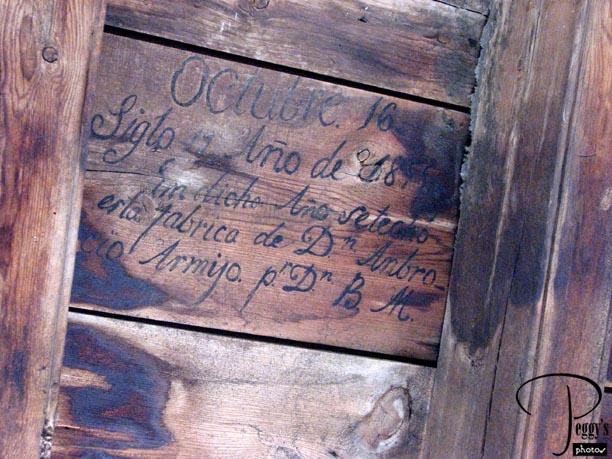
Look up at the wood over the entrance to the market and you will see what is in this photo: The workmen left an inscription noting the date the entrance was built (I can’t read it all, but some time in the 1800s) and that it was built for the Armijo family, who owned the building that is now the La Placita Restaurant.

Old Town Albuquerque
Old Town Albuquerque
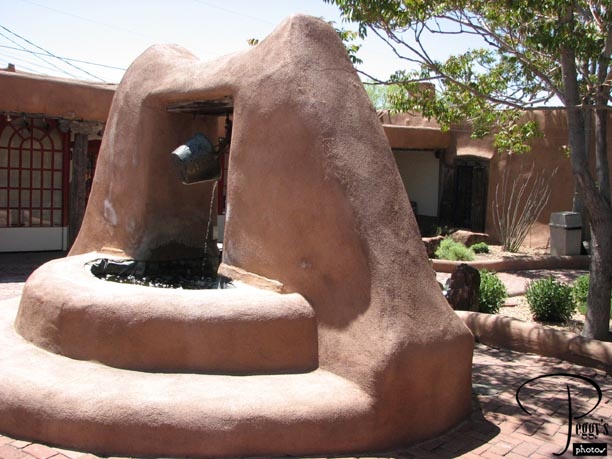
The wishing well in the Patio Market.

Old Town Albuquerque
Old Town Albuquerque
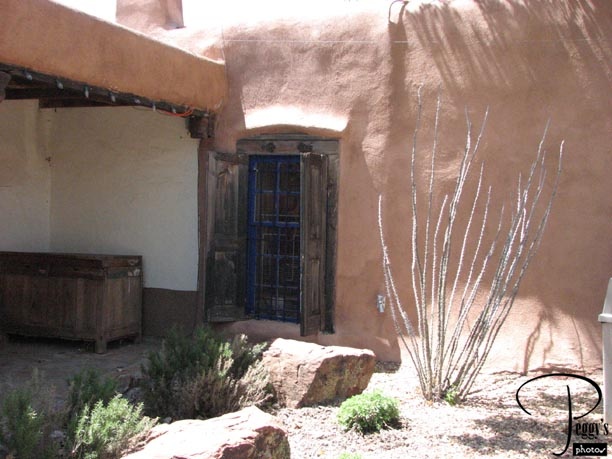
One of the old pueblo buildings in the Patio Market.

Old Town Albuquerque
Old Town Albuquerque
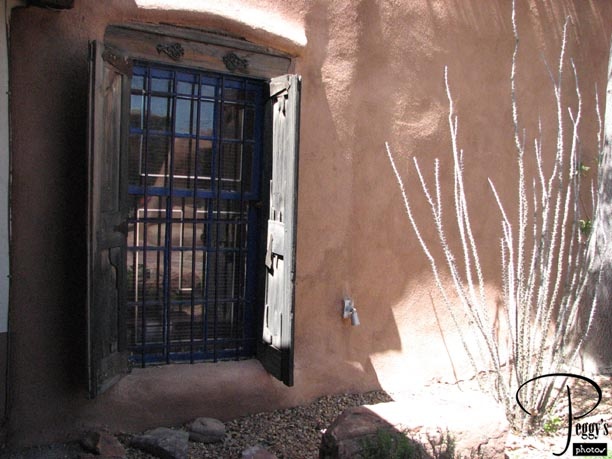
Close–up of the old, original window.

Old Town Albuquerque
Old Town Albuquerque
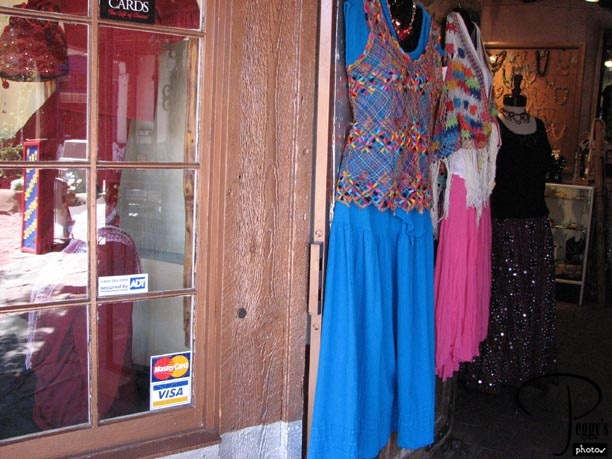
Southwestern–style dresses on sale here.

Old Town Albuquerque
Old Town Albuquerque
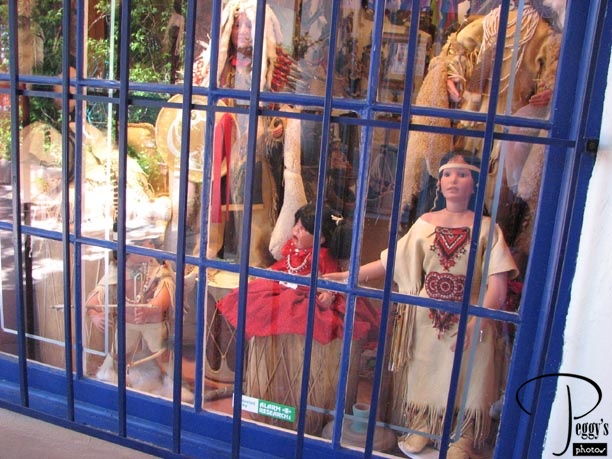
Indian dolls for sale.

Old Town Albuquerque
Old Town Albuquerque
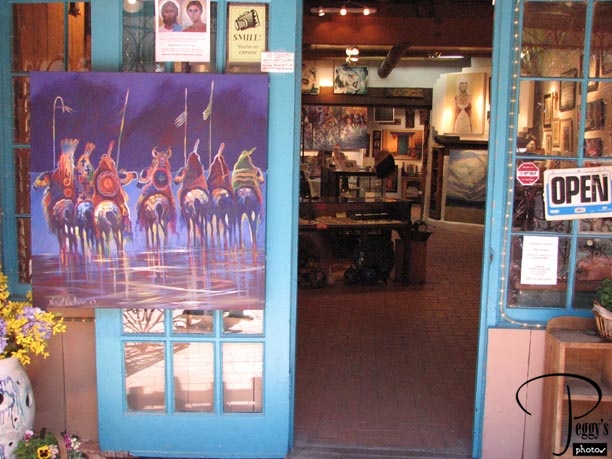
Another store in the Patio Market.

Old Town Albuquerque
Old Town Albuquerque
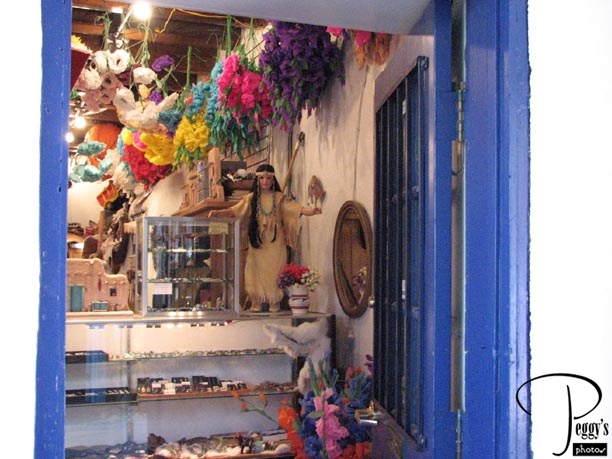
And another.

Old Town Albuquerque
Old Town Albuquerque
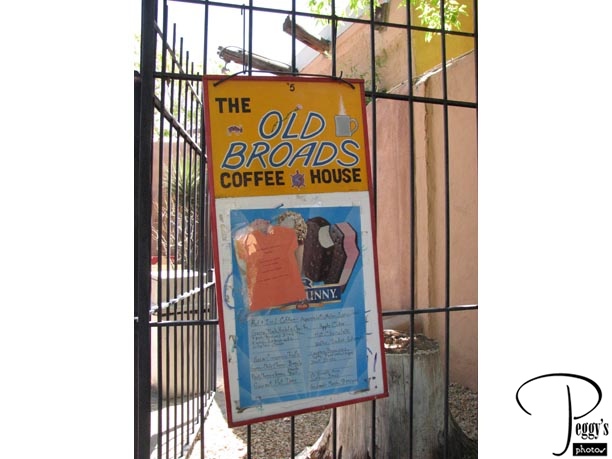
Coffee house in the Patio Market. The name of it was way more interesting than the actual coffee house.

Old Town Albuquerque
Old Town Albuquerque
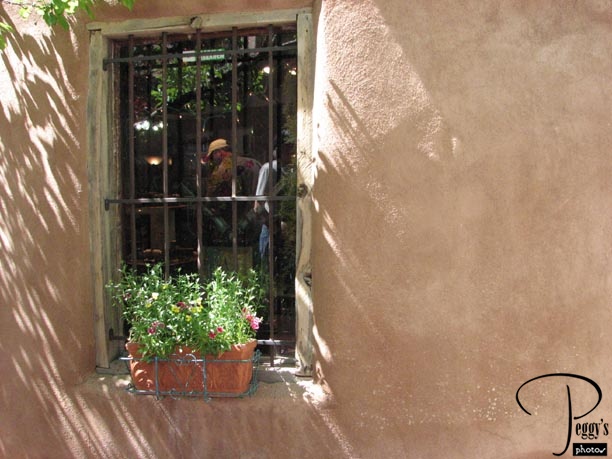
Another original window.

Old Town Albuquerque
Old Town Albuquerque

And another.

Old Town Albuquerque
Old Town Albuquerque
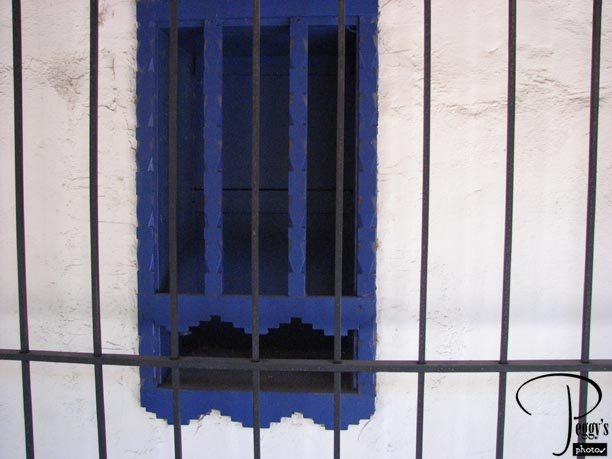
Time for lunch. I went into the La Placita Restaurant to look at the menu––seen through the balloons hanging across the street. Albuquerque is famous for its hot–air balloon festival in October, so you see many decorative balloons throughout the city.

Old Town Albuquerque
Old Town Albuquerque
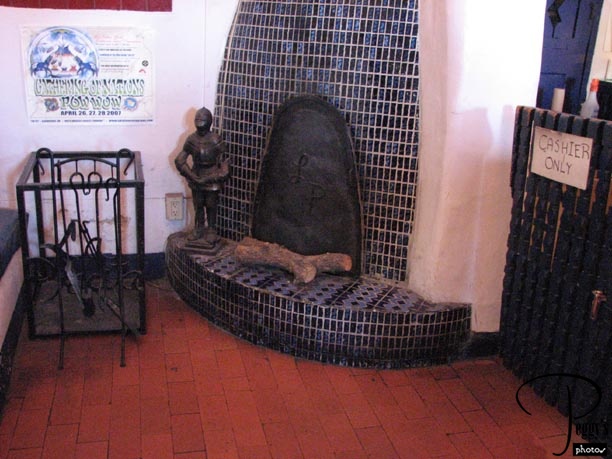
Old fireplace in the lobby of the La Placita Restaurant.

Old Town Albuquerque
Old Town Albuquerque
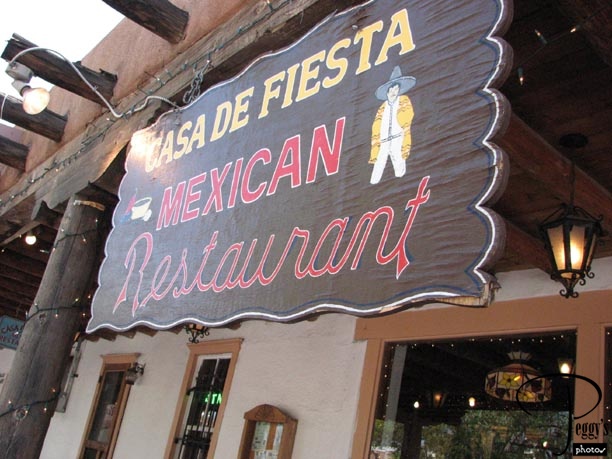
I decided that I would eat elsewhere and the Casa de Fiesta Mexican Restaurant on the Plaza looked inviting.

Old Town Albuquerque
Old Town Albuquerque
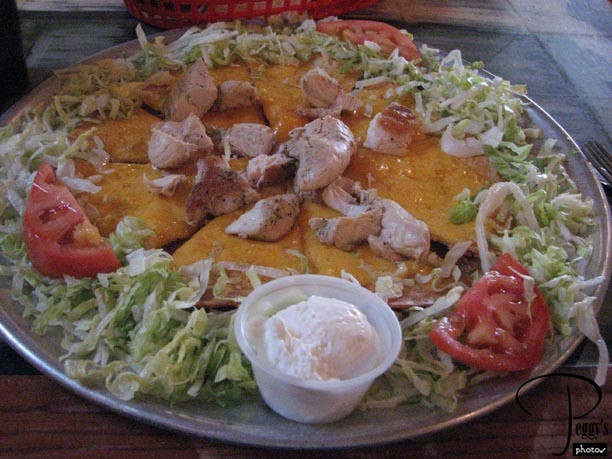
But don’t eat here. I ordered a quesadilla with chicken. In California, the chicken and cheese are inside the tortilla. Here, they were outside. Actually, the cheese and the tortilla were tasty but not the chicken, but where was the guacamole and the salsa to go with it. I was afraid to ask for any as before my dish came I was served tortilla chips with a hot sauce that both wasn’t hot but had the consistency of ketchup. I have been assured that the Mexican food here was not the norm for New Mexico, but that its Mexican food is on par or better than Californian Mexican food.

Old Town Albuquerque
Old Town Albuquerque
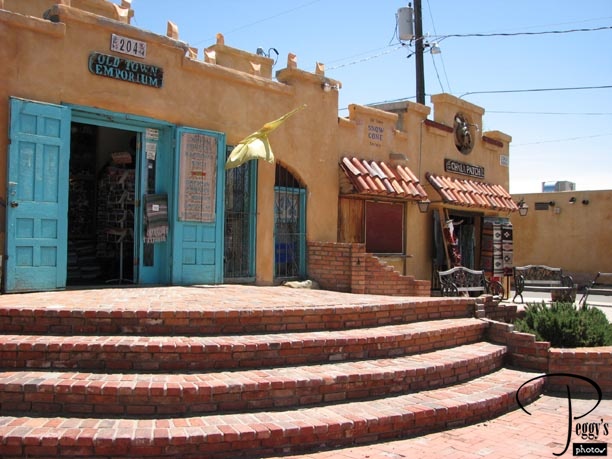
Another pueblo–style building with bright blue doors.

Old Town Albuquerque
Old Town Albuquerque
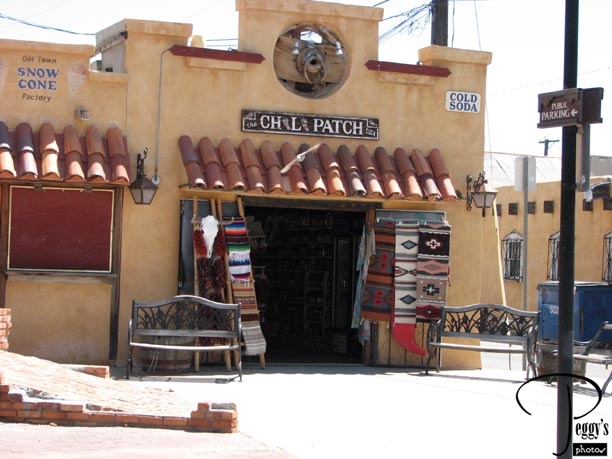
Indian blankets for sale here.

Old Town Albuquerque
Old Town Albuquerque
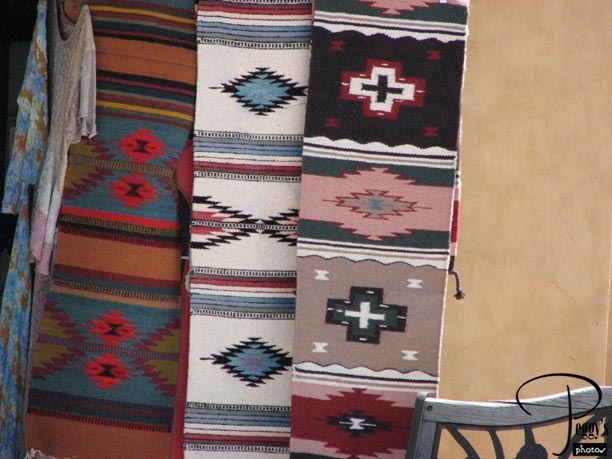
Close–up of the blankets. I didn’t price any Indian blankets, but I am sure that they are not inexpensive.

Old Town Albuquerque
Old Town Albuquerque

Art work in a gallery area of the Old Town.

Old Town Albuquerque
Old Town Albuquerque
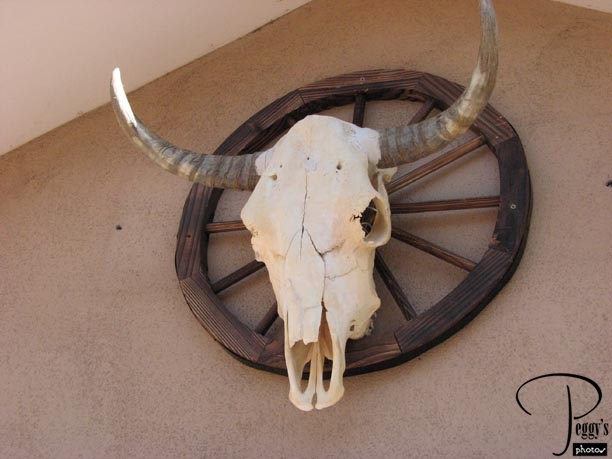
More art work.

Old Town Albuquerque
Old Town Albuquerque
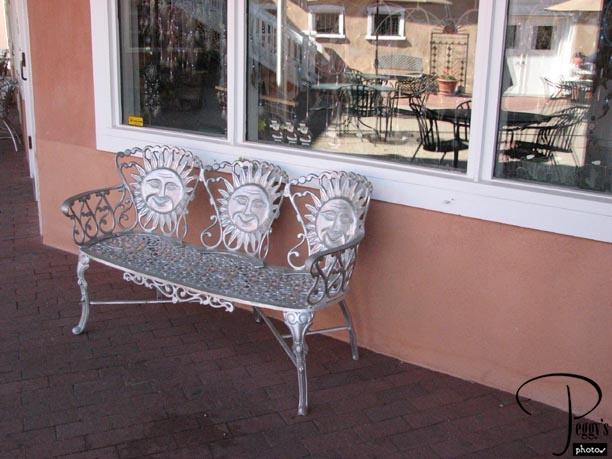
And you can also rest your weary tourist legs with your back resting on suns. I next walked over to the sculpture garden in front of the Albuquerque Museum of Art and History. My photos of it will be on my next album.

Old Town Albuquerque
Albuquerque Museum Sculpture Garden
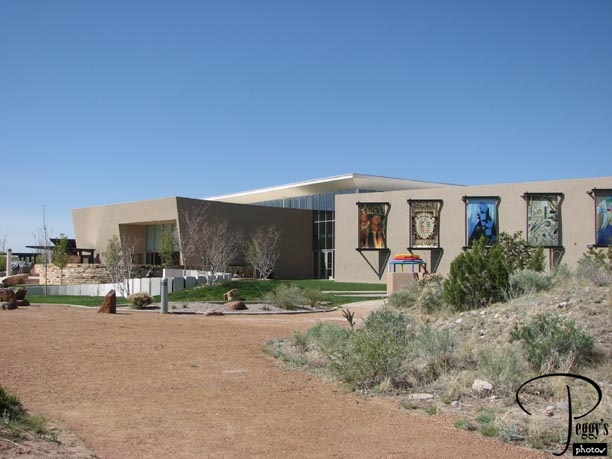
I next walked over to the Albuquerque Museum of History and Art located behind Old Town to see the Sculpture Garden in front of the museum.

Albuquerque Museum Sculpture Garden
Albuquerque Museum Sculpture Garden
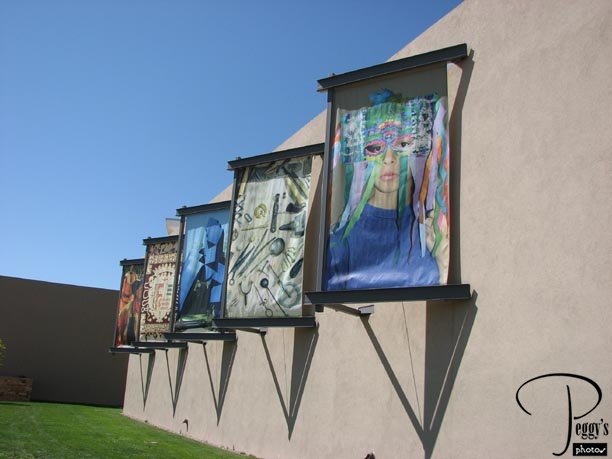
Banners along the wall.

Albuquerque Museum Sculpture Garden
Albuquerque Museum Sculpture Garden
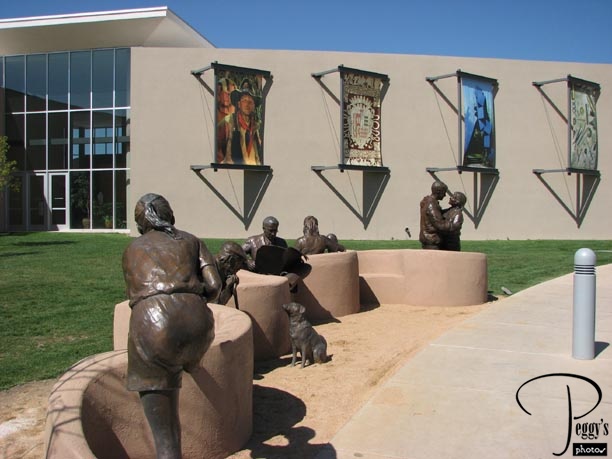
A series of sculptures.

Albuquerque Museum Sculpture Garden
Albuquerque Museum Sculpture Garden
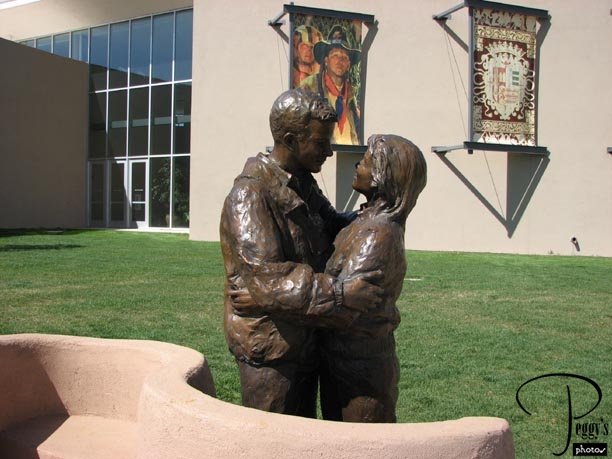
The individual sculptures.

Albuquerque Museum Sculpture Garden
Albuquerque Museum Sculpture Garden
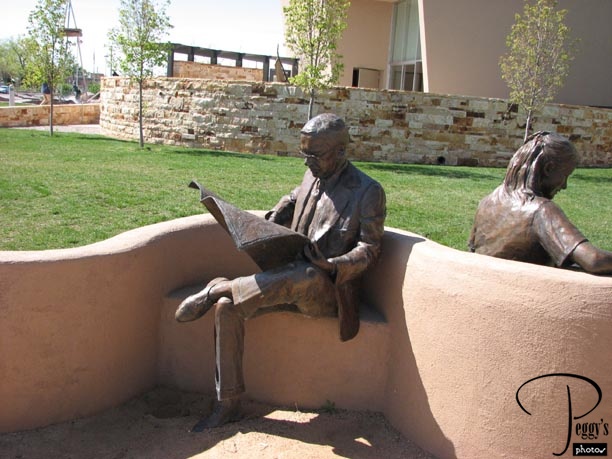
More of the individual sculptures.

Albuquerque Museum Sculpture Garden
Albuquerque Museum Sculpture Garden
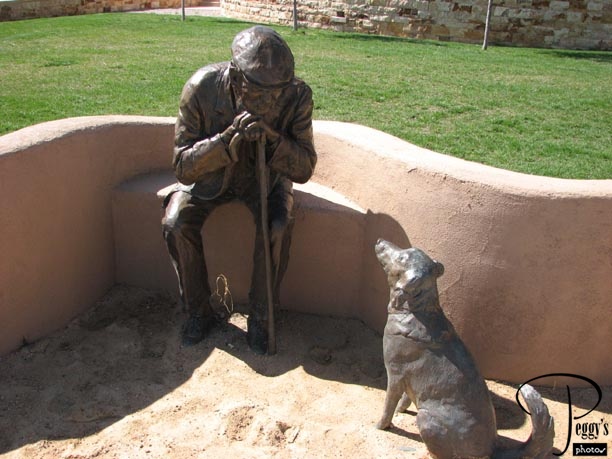
My favorite of this series of sculptures.

Albuquerque Museum Sculpture Garden
Albuquerque Museum Sculpture Garden
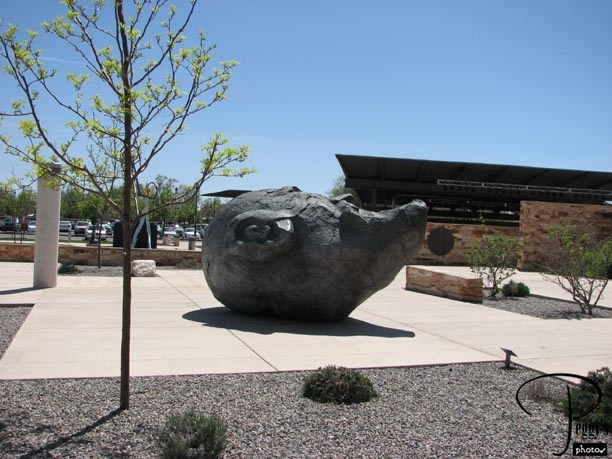
Look at this sculpture from this direction and you’ll probably come up with things such as “It’s some kind of very large animal.” But see the next photo.

Albuquerque Museum Sculpture Garden
Albuquerque Museum Sculpture Garden

From the opposite angle, it’s a man’s head.

Albuquerque Museum Sculpture Garden
Albuquerque Museum Sculpture Garden
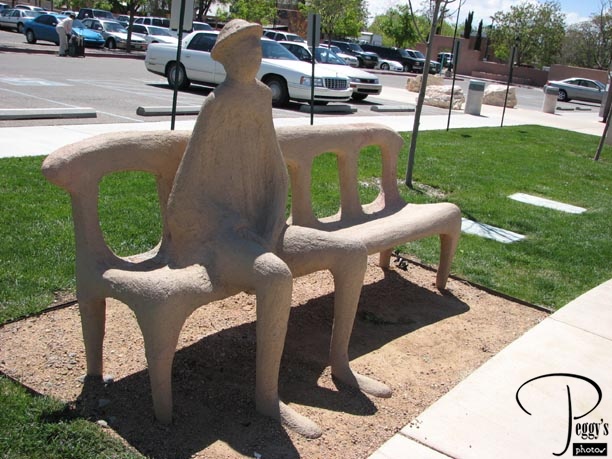
I liked this one.

Albuquerque Museum Sculpture Garden
Albuquerque Museum Sculpture Garden
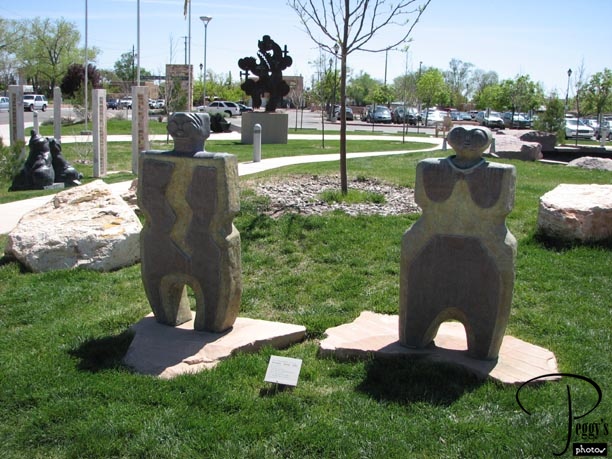
Two more.

Albuquerque Museum Sculpture Garden
Albuquerque Museum Sculpture Garden
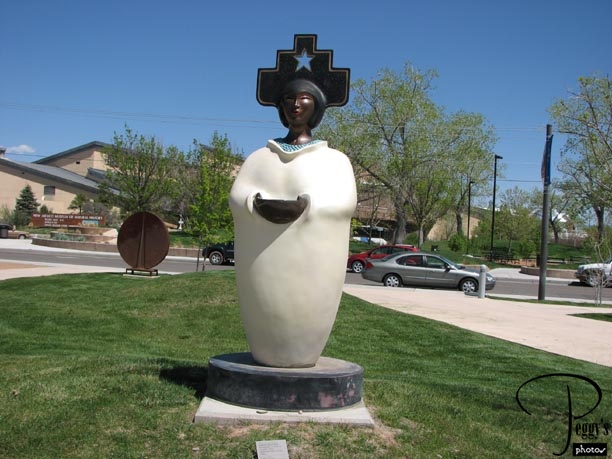
The Earth Mother.

Albuquerque Museum Sculpture Garden
Albuquerque Museum Sculpture Garden
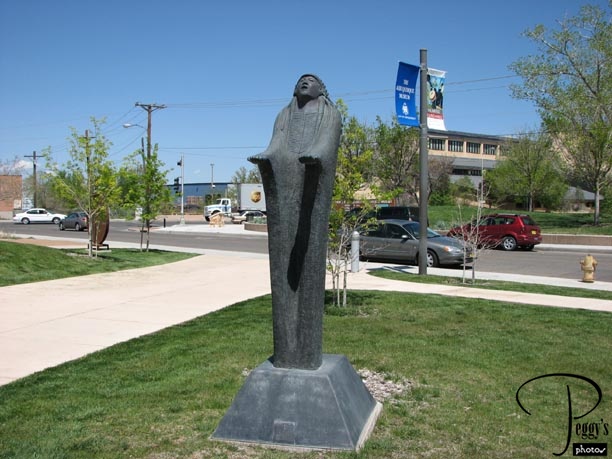
Another sculpture.

Albuquerque Museum Sculpture Garden
Albuquerque Museum Sculpture Garden
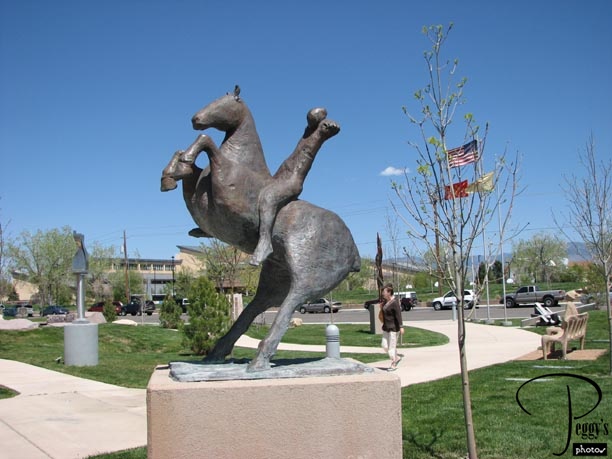
Horseman.

Albuquerque Museum Sculpture Garden
Albuquerque Museum Sculpture Garden
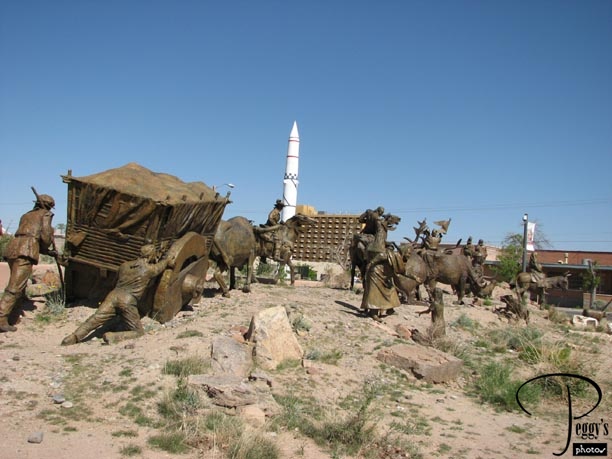
The Pioneers. I like the view of the rocket in the photo––it is in front of the Albuquerque Atomic Museum.

Albuquerque Museum Sculpture Garden
Albuquerque Museum Sculpture Garden

Closer–up of this sculpture.

Albuquerque Museum Sculpture Garden
Albuquerque Museum Sculpture Garden
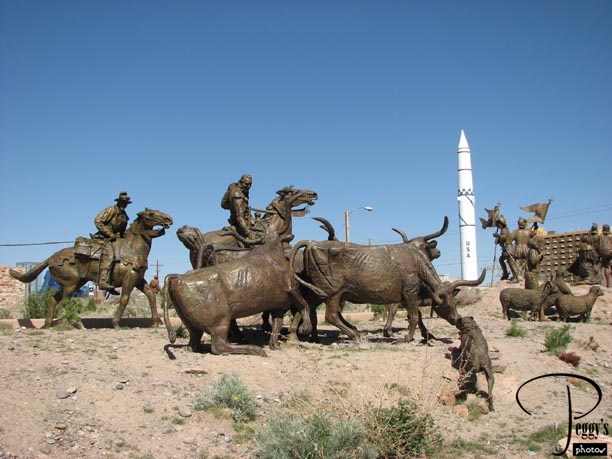
More of the sculpture.

Albuquerque Museum Sculpture Garden
Albuquerque Museum Sculpture Garden
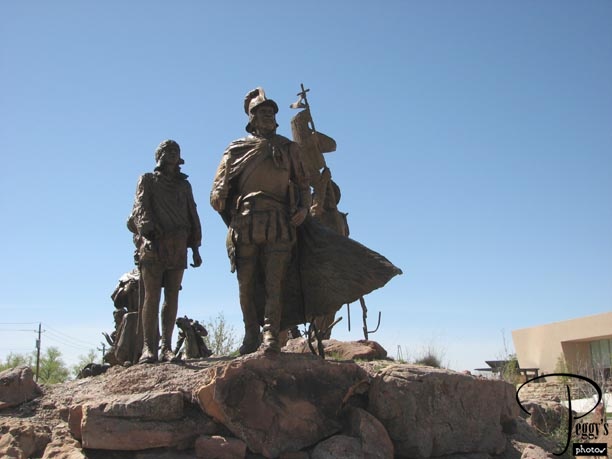
The Conquistadors leading the pioneers.

Albuquerque Museum Sculpture Garden
Albuquerque Museum Sculpture Garden
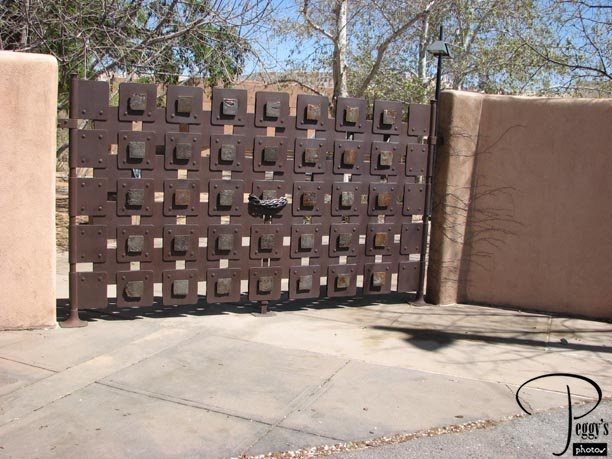
Gate of the museum. The artist used scrap metal that he found all over New Mexico to make this gate.

Albuquerque Museum Sculpture Garden
Albuquerque Museum Sculpture Garden
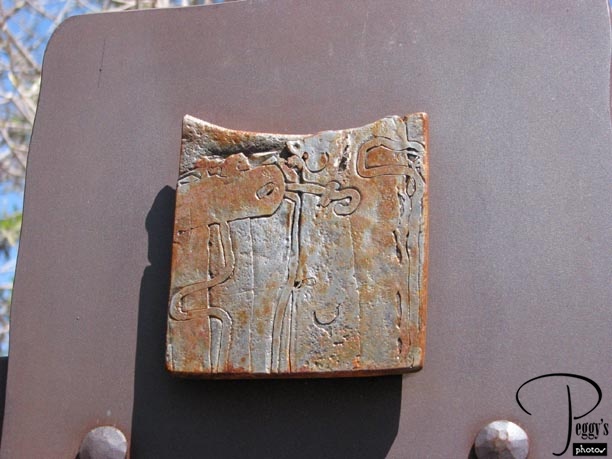
You can see some hooks that he used in this close–up of the gate.

Albuquerque Museum Sculpture Garden
Albuquerque Museum Sculpture Garden
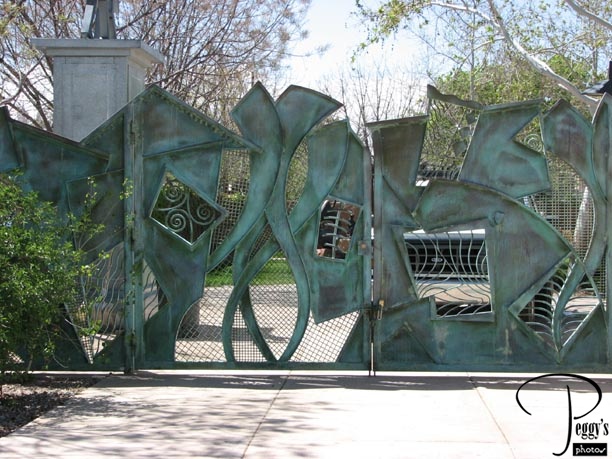
Another interesting gate I saw on my way to my car.
